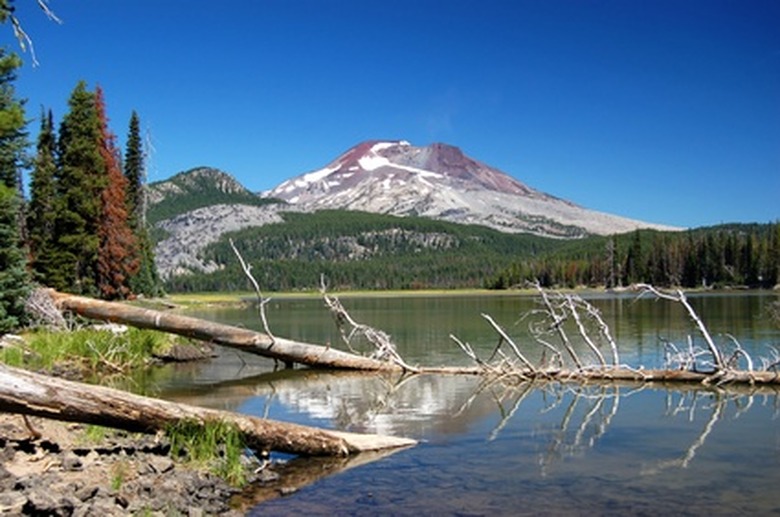What Shade Trees Grow Fast In Central Oregon?
Central Oregon is located in a high mountain desert, with cold, snowy winters and sunny, dry summers. With as many as 300 days of sun each year, fast-growing shade trees in your garden can provide a welcome respite. Evergreen and deciduous shade trees that are native to the region have the greatest chances of success.
Douglas Fir
Douglas firs are found all over Oregon, especially in areas where clear-cuts have been replanted. This coniferous tree grows quickly and is ready for timber harvest in a relatively short time. Their rounded pyramid shape and strong aroma also make them popular Christmas trees. Douglas firs have blueish-green needles and can grow up to 60 feet tall and 30 feet across. Depending on their conditions, they can grow between 1 and 3 feet each year. The watering requirements of Douglas firs are adaptable; they can withstand a drought, which makes them an ideal tree for Central Oregon.
- Central Oregon is located in a high mountain desert, with cold, snowy winters and sunny, dry summers.
- The watering requirements of Douglas firs are adaptable; they can withstand a drought, which makes them an ideal tree for Central Oregon.
Quaking Aspen
Quaking aspens are tall, fast-growing trees that are tolerant of Central Oregon's cold winter temperatures. They create interesting contrast in the garden with their white bark and bright yellow fall foliage. Quaking aspens can grow as quickly as 5 feet each year, reaching heights of 50 feet. Their mature width of up to 25 feet creates ample shade underneath. Quaking aspens tolerate a variety of soil types, and they are drought-resistant.
Black Cottonwood
Black cottonwood trees are also called balsam cottonwood because of the sharp fragrance they give off in the spring when their leaf buds swell. These fast-growing trees have tough, dark green leaves and white bark. Black cottonwoods can grow as tall as 90 feet, with branches that spread up to 35 feet in diameter. They adapt easily to most soil types. Young trees prefer moist soil, but once the black cottonwood's extensive root system is established, it becomes more drought-tolerant.
- Quaking aspens are tall, fast-growing trees that are tolerant of Central Oregon's cold winter temperatures.
- Quaking aspens can grow as quickly as 5 feet each year, reaching heights of 50 feet.
Lodgepole Pine
Lodgepole pines get their name from their distinctive long, straight trunks that were used by Native Americans for tent poles and totem poles. Although they don't grow quite as quickly as the aspen or cottonwood, these stately coniferous trees reach heights of 80 feet with cone-shaped foliage near the top. Younger trees have bushier foliage growth, making them good for shade. Lodgepole pines require well-drained soil and can adapt to many soil types.
White Alder
The foliage of a mature white alder provides so much shade that few plants can survive beneath it. These trees can reach 80 feet tall and 40 feet wide. White alders require a lot of water, which makes them a good choice for planting near a stream or pond, and they tend to thrive in areas that have been recently cleared of vegetation. The twigs of a mature white alder turn deep red, and the leaves give off a tannic aroma. White alders are nitrogen-fixers so they don't require much fertilization.
- Lodgepole pines get their name from their distinctive long, straight trunks that were used by Native Americans for tent poles and totem poles.
- White alders require a lot of water, which makes them a good choice for planting near a stream or pond, and they tend to thrive in areas that have been recently cleared of vegetation.
